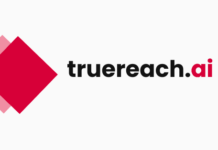From a modest launch in 2000, to becoming one of the most widely adopted relational database management systems in the world, and then charting a new path after being acquired by Oracle, MySQL has come a long way. Tomas Ulin, VP – MySQL Engineering, Oracle, covers a lot of ground in an interview with Rahul Chopra, editorial director, EFY Group. Amongst other things, he talks of MySQL’s continued engagement with the open source community, its continuous evolution to serve new demands and its growing popularity under Oracle’s stewardship.
Q. How has MySQL evolved in the last few years?
The fact that MySQL continues to be the world’s most trusted and widely used open source database gives you an indication of how successful we’ve been. MySQL’s proven track record when it comes to performance, reliability and ease of use has made it the most preferred database for Web-based applications. A large number of databases offered on the cloud are based on MySQL technologies. Further, MySQL is available on all clouds, offering great flexibility to businesses and developers.
MySQL powers the world’s top social media companies, such as Facebook, Twitter, Tencent, LinkedIn and YouTube. Leading global e-commerce companies, including Uber, Netflix, Airbnb, Alibaba, Booking.com and India based Flipkart use MySQL. Some of the world’s renowned fintech firms, like WorldRemit, Square, TransferWise, OnDeck and FutureAdvisor rely on MySQL to manage their business smoothly.
Q. With Big Data and the cloud, many new database players seem to be vying for the attention of the community and customers. What’s your take on this?
MySQL was designed and optimised for Web applications. We continue to innovate and make it contextually relevant for developers and businesses. With cloud adoption rising dramatically, companies are looking to their developers to drive digital transformation initiatives and deliver new modern applications, quickly, and at scale. MySQL offers the much needed agility to developers and businesses, while significantly reducing the cost involved in the process. MySQL is a key component of numerous Big Data platforms and provides extremely valuable insights using the Hadoop platform.
Leading Software-as-a-Service (SaaS) providers like Workday, AppDynamics, Zendesk, HubSpot, Zenefits, and GitHub bank on MySQL to run their businesses. MySQL is the technology of choice for some of the world’s most popular unicorns, including DropBox, Line, Pinterest, Spotify, Yelp, Box, Ola, PayTM and InMobi, amongst others.
Q. Is the open source community still important for MySQL? How has MySQL grown under Oracle’s stewardship?
It’s heartening to see strong open source adoption globally. Yes, the open source community is critical for the growth of and contribution to MySQL, given a large number of downloads every day.
Under the aegis of Oracle, MySQL has further grown in popularity, strength, and capabilities. Delivery and security have become even better; MySQL is now secure, by default, when it is installed. There’re a lot of mutual synergies. The vast majority of businesses that use Oracle solutions also use MySQL. And given Oracle’s focus on embracing open source in a big way, it augurs well for MySQL.
Q. How do you and your team continue to champion MySQL with the community?
In the data-driven world, MySQL is also evolving to remain the premier choice for Web-based applications. Part of this evolution involves actively engaging with the community through a number of initiatives: MySQL user conferences, webinars (live/on-demand), events, regular meetups and online forums/blogs. We receive a lot of code contributions, bug reports, and feedback from the community. We have a dedicated group of engineers to actively address the needs and challenges of the community. The stewardship of Oracle has been appreciated by a lot of independent observers and people who have been a part of MySQL since the beginning.
Q. What’s your team’s mantra for managing and developing MySQL?
Our aim is to provide the best experience of MySQL on the Oracle cloud. Additionally, with the popularity of the cloud, we are focusing on expanding product features and techniques to enable database administrators to get cloud databases up and running quickly and efficiently.
On the talent front, we are firm believers in a meritocracy. The hiring and growth of the team is based on wherever in the world we find the right capability. I am happy to share with you that India has our largest development centre.
Q. How is business for MySQL growing? Where would India rank amongst all nations in terms of sales revenues?
We’re growing at an impressive pace. Increasing cloud adoption and rising demand for modern developers have contributed to our growth. In India, we are working with a lot of leading public and private sector organisations and have a large footprint in the country. India is the fastest growing market for MySQL in the APAC region and our growth is showcased by the number of new clients we are adding to our portfolio. I want to highlight three examples here.
Mahindra Comviva, a subsidiary of Tech Mahindra and a part of the US$ 19 billion Mahindra Group, was able to improve system performance by 50x and cut its customers’ project costs by 5x by using the MySQL Enterprise Edition.
Rehash, an alumnus of the Oracle Startup Cloud Accelerator programme, increased application performance by 3x by using Oracle MySQL. We’ve learnt that its stability and performance is at the best level it has ever been.
iTriangle, one of the leaders in the Indian vehicle telematics industry, leveraged Oracle MySQL Cloud Service along with Oracle cloud infrastructure to build a scalable, easy-to-manage and highly available platform.
In the public sector, we’re an inherent part of several global, large-scale government initiatives as well, including public identity and benefits programmes.
Q. Has the business model for MySQL evolved over the years? If yes, how?
In the digital economy, the cloud has become a business imperative. MySQL has evolved to accommodate this shift, as companies look to transform into cloud-first businesses.
Our latest product, MySQL 8.0, caters to developers using both SQL and NoSQL technologies. Our recent focus has been on ensuring high availability with auto failover, and in helping businesses as well as developers in effectively managing a distributed database with multiple nodes.
Q. How important is India in terms of influencing global sales—through the captive and independent design houses?
India is important both from a product development as well as market opportunity point of view. On the product development side, there’s a lot of contribution from the India team across all areas of work. On the market opportunity front, we’re doing a lot of interesting work with several government agencies.
Q. How important is the role of ISVs/SIs or partners in the growth of MySQL? Is that also championed by your team?
We have a strong partnership with SIs, open source solution providers and VARs across regions. Our channel partners are making a significant difference in the way we sell our solutions. In addition, the growth in the mobile arena offers our channel partners tremendous opportunities through mobile-enabling legacy systems or rolling out new solutions. We have 2000+ ISV partners and this number continues to grow. Our partners help build solutions, co-innovate and take to market the benefits of the world’s most popular open source database to a larger audience. These partnerships are essential to complete the MySQL ecosystem and enable its growth in the regions. We have a dedicated channel strategy and team for MySQL.
Q. For entrepreneurs within the ecosystem, what does MySQL offer—for them to think about investing energy and resources in partnering with you?
Any organisation, be it a startup, a mid-sized firm or a large enterprise, can achieve faster time to market and reduce costs while deploying virtualised MySQL environments, either on-premises or on the cloud.
For entrepreneurs, the key is increased agility, while reducing costs; with Oracle MySQL Cloud Service, entrepreneurs can get a secure, cost-effective and enterprise-grade MySQL database service that can help them rapidly deploy innovative applications. The Oracle MySQL Cloud Service is simple, automated, integrated and enterprise-ready.
At a higher level, the Oracle Startup Cloud Accelerator, our next-gen acceleration initiative, focuses on reimagining enterprise innovation via partnerships with startups to foster co-development and co-innovation – a winning proposition for the entire ecosystem. Led by Oracle’s R&D organisation, we offer both residential and non-residential/virtual startup programmes, allowing us to work with global startups irrespective of what stages of growth and development they are at.
Q. Could you briefly tell us about the range of offerings for developers?
Oracle is highly committed to developing, supporting and promoting open source software and our contribution has been acknowledged by a lot of developers. Thousands of Oracle engineers are part of open source, MySQL communities and develop code that is freely available. We’re committed to providing choices and a lower cost of computing for end users, along with flexibility.
The latest offering of the MySQL shell offers unmatched ease of development, empowering developers with a single interface to develop, deploy and manage MySQL instances.
In line with Oracle’s larger open source commitment, as part of our contribution to container native technology, we have recently launched a new open source, cloud agnostic, serverless platform called Fn (https://fnproject.io). We have recently partnered with the Cloud Native Computing Foundation (CNCF) and have adopted Docker and Kubernetes as the foundation for our container native strategy. Oracle is also contributing to both these important projects.
Q. Are there any special tools or resources to enable database managers and software developers to train themselves on MySQL?
There are plenty of online resources for familiarising yourself with MySQL. We conduct MySQL camps for users every quarter, at our office, and developers from various leading IT organisations attend this camp to exchange knowledge and experiences on their innovations and to debate recent developments. Developers and users frequently contribute to Planet MySQL through blogs and discussions.
Also, Oracle University offers multiple courses to help MySQL users — from beginners to highly skilled database developers — to stay updated and remain relevant.
What are the highlights of the latest MySQL release? What would be the ‘Top 3’ features that you’d like to share with our readers?
MySQL 8.0 offers a list of new features for database administrators to increase performance optimisation. For instance, it adds NoSQL features that appeal to the next generation of cloud-native developers.
Of the several key features of MySQL 8.0, I’d like to highlight the following three.
- NoSQL Document Store: This offers multi-document transaction support and full ACID compliance for schema-less JSON documents.
- MySQL Shell: This is a single interface for developing, deploying and managing MySQL instances. You can interact with MySQL from this interface in the language of your choice.
- InnoDB cluster: With this, high availability is now a core first class feature.


















































































Thanks for your post. This is excellent information. This information is amazing and very helpful to me.